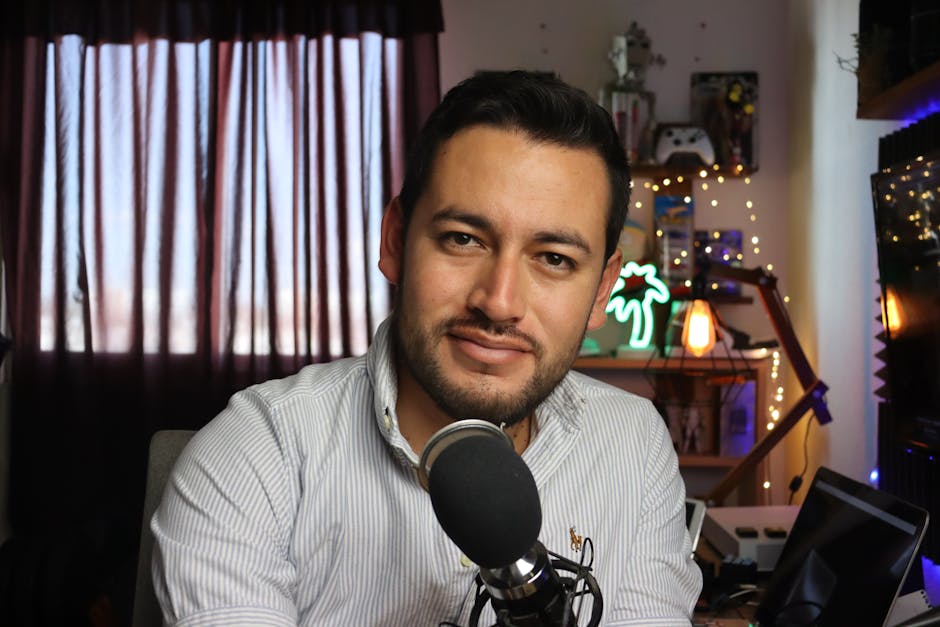My Personal Roadmap to Building a Full-time Podcasting Business.
My Personal Roadmap to Building a Full-time Podcasting Business
The dream of turning a passion into a profession isn’t just a cliché; for me, it became a driving force. Podcasting started as a hobby – a creative outlet to share ideas and connect with like-minded individuals. But somewhere along the line, the casual conversations evolved into a clear vision: to build a full-time podcasting business. This isn’t a generic “how-to” guide you’ve seen a hundred times. This is my actual, personal roadmap, detailing the specific steps, pivots, lessons learned, and the strategic thinking that has guided me from recording in a makeshift closet studio to charting a course for a sustainable, full-time enterprise. If you’re wondering how to bridge the gap between a beloved side project and a thriving career behind the mic, you’ve come to the right place. Let’s unpack the journey.
Charting My Initial Course: Defining the Niche and Core Value
My first crucial step wasn’t about equipment or editing software; it was about absolute clarity. I had to define precisely what my podcast was, who it was for, and what unique value it offered. This foundational work is often overlooked, but it’s the bedrock of any successful business, especially one built on content. I spent weeks brainstorming, researching, and even conducting informal surveys to pinpoint my ideal listener and the specific problem I could solve or the unique perspective I could bring.
Crafting a Magnetic Value Proposition
I realized early on that “just talking about X” wasn’t enough. My podcast needed a magnetic value proposition – something that would immediately tell potential listeners why they should tune in and why they should stay. For me, this meant identifying a specific gap in the existing podcast landscape and committing to filling it with authentic, deeply researched, and engaging content. I narrowed down my broad interest into a specific, underserved niche. This isn’t about being exclusive; it’s about being *distinct*. It meant clearly articulating: “This podcast helps [specific audience] achieve [desired outcome] by providing [unique approach/content].” This became my North Star, guiding every content decision, every guest invitation, and every promotional effort. It allowed me to attract not just listeners, but the *right* listeners – those who would eventually become a loyal community and, ultimately, customers.
If you’re still exploring your podcast’s identity, consider a deep dive into niche selection to find your unique angle.
From Passion Project to Professional Platform: Mastering Content and Production Workflow
Once my niche and value proposition were solid, the next phase of my roadmap involved elevating the content and professionalizing the production. A full-time business demands consistency, quality, and a reliable output schedule. This meant moving beyond ad-hoc recording sessions and embracing a structured, efficient workflow.
Streamlining the Creative Process
I developed a meticulous content calendar, planning topics, guests, and promotional angles months in advance. This wasn’t just about being organized; it was about ensuring a steady stream of high-quality content that resonated with my audience. I invested time in learning advanced interview techniques, storytelling structures, and how to craft episodes that kept listeners engaged from start to finish. On the production side, I standardized my audio setup, learned the intricacies of sound design, and developed a post-production checklist that ensured every episode met a professional standard before release. This included everything from noise reduction and leveling to adding intros, outros, and dynamic music. The goal was to make the listening experience seamless and enjoyable, reflecting the professionalism I aimed for in my business. Automating certain aspects, like episode scheduling and social media snippets, also became crucial in freeing up time for content creation and strategic planning.
Cultivating a Loyal Tribe: My Audience Growth Playbook
A podcast business thrives on its audience. My roadmap heavily emphasized not just attracting listeners, but building a *loyal tribe* that felt connected to the show and its mission. This meant going beyond simply publishing episodes and actively engaging with the community.
Engaging Beyond the Airwaves
My strategy involved a multi-pronged approach. Firstly, I leveraged social media platforms where my target audience spent their time, sharing episode snippets, behind-the-scenes content, and asking engaging questions. I didn’t just broadcast; I initiated conversations. Secondly, I focused on SEO for my show notes and website, ensuring my content was discoverable through search engines. This meant using relevant keywords and creating compelling descriptions for each episode. Thirdly, guest appearances on other podcasts within my niche proved invaluable for reaching new audiences. It was a mutually beneficial exchange that introduced my show to listeners already interested in similar topics. Finally, I actively encouraged reviews and ratings on podcast platforms, as these social proofs significantly impact discoverability and credibility. Building an email list was also paramount, allowing me a direct line of communication with my most engaged listeners, offering exclusive content, and sharing updates directly to their inboxes. This direct relationship is invaluable for fostering loyalty and preparing for monetization.
For more ideas on expanding your reach, check out these effective podcast marketing strategies.
Unlocking the Revenue Streams: My Monetization Blueprint
The transition from hobby to full-time business hinges entirely on sustainable monetization. My roadmap didn’t rely on a single income stream; instead, I built a diversified blueprint designed for resilience and growth. This phase was about understanding my audience’s value and finding ethical ways to serve them while generating income.
Diversifying Income for Stability
Initially, I focused on a combination of strategies. Sponsorships and advertisements were a natural fit, but I was highly selective, ensuring advertisers aligned with my show’s values and audience interests. Authenticity was key; I only promoted products or services I genuinely believed in. Beyond traditional ads, I explored audience-supported models like Patreon, offering exclusive bonus content, early access, and community interactions to my most dedicated listeners. This created a direct connection and a predictable recurring revenue stream. Furthermore, I began developing digital products and services directly related to my podcast’s niche. This included online courses, workshops, and e-books that expanded on topics discussed in the show, providing deeper value to my audience while leveraging my expertise. Affiliate marketing, recommending tools or resources I personally use and trust, also contributed a small but steady income. The key insight here was to build multiple, independent revenue streams. If one source fluctuates, the others can provide stability, a critical factor for a full-time venture. This diversification allowed me to gradually reduce reliance on a day job and make the leap confidently.
Scaling Smart: Expanding Beyond the Mic and Building a Team
Once the podcast began generating consistent revenue, my roadmap shifted towards smart scaling. Being a full-time podcaster doesn’t mean doing everything yourself forever. It means strategically expanding your reach and efficiency, which often involves bringing in support.
Building a Support Ecosystem
My initial scaling efforts focused on outsourcing tasks that consumed significant time but weren’t core to my unique voice or content creation. This included hiring a freelance audio editor, which dramatically improved my post-production turnaround time and freed me up to focus on interviews and content strategy. Later, I brought in a virtual assistant to help with show notes, social media scheduling, and guest outreach. This wasn’t about delegating my passion; it was about optimizing my time for the highest-impact activities – creating compelling content and connecting with my audience. I also started exploring partnerships and collaborations with other creators and brands, expanding my reach and opening new avenues for growth. The




Post Comment